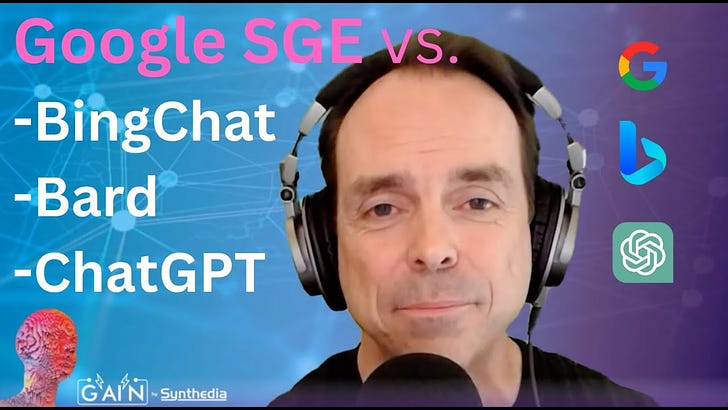Google Bard is Multimodal and Local - Is This a Sign of a Comeback?
Battle of the Bots takes on new features
Google Bard had an unimpressive debut in its February 2023 preview. The primary issue it faced was expectations. ChatGPT set a high bar. Google has a reputation for impressive demonstrations of its own in other areas. It also had been working on large language models (LLM) for many years, had a beta in limited circulation using the LaMDA LLM, and had told everyone the solution was impressive. Then came ChatGPT.
Then came ChatGPT.
GPT-3’s debut in mid-2020 was impressive. Most people were amazed at what the LLM could do with modest user guidance. OpenAI’s applications and those by third parties gradually turned those interesting demos into a number of useful applications. ChatGPT kicked that up a notch. And just in case anyone thought it was a novelty, an analyst estimated the company reached 100 million monthly active users in about six weeks.
Lackluster Start vs Fast Start
Bing was about to announce its new conversational generative AI search powered by GPT-3 (though it was later revealed Microsoft was using GPT-4 all along). Google declared its famous “code red” in December after seeing the capabilities and user interest in ChatGPT. Two months later, the day before Microsoft’s event, Google sought to pre-empt Bing Chat’s announcement.
The demo for journalists was canned videos and marketing collateral. There was no access offered and an error was identified in the collateral. This only fueled concerns about LLM hallucinations. It was less impressive than GPT-3 2020, despite more capabilities.
The following day, the New Bing wowed journalists with live demos, features no one had seen before, and beta phase login credentials to try it out at their leisure. Microsoft had a few negative stories but, by and large, benefitted from a positive reception.
After all this, no one was talking about Bard. However, it is improving quickly. You should be paying attention.
Bard Goes Multimodal
Bard is Google’s answer to ChatGPT. It’s Search Generative Experience (SGE) is the product set up to compete directly with Bing Chat. However, Google couldn’t help but put several search features into Bard from the start.
At Google I/O, new features for sources, saving Bard responses to Google Docs, and multimodal responses were announced. The service is also available to anyone with a personal Gmail account.
Notice in the image above that Wikipedia is shown as the source. And if you click on the image, it will take you directly to the image source page.
Bard cannot yet show you videos (unlike Google SGE). However, the bulleted lists, informative prose, and images perform well.
Go Local Young Bard
This past week, Google added local context to Bard. When you ask about restaurants in your area, the weather, or shopping, it will answer with local options in the response.
If you want your general-purpose generative AI solution to be an assistant used throughout the day (a.k.a., Copilot), these are useful and may be essential capabilities. OpenAI thinks it will serve this need using Plugins, but it does not today. Bing Chat supports local questions and will generate responses similar to what you see above. Google is competitive and likely “good enough” for most users.
Is Google Making a Comeback?
Bard has greatly improved since switching from the LaMDA to the PaLM 2 AI model. It is a credible alternative to ChatGPT. It is also competitive with Bing Chat despite Google SGE being the primary generative AI search product today.
Google has had a challenging generative AI rollout, and at the company’s annual I/O developer conference, you could sense a little humility breaking through. A comeback does seem to be in process. There is more work to be done to match the quality and feature pace of OpenAI, Microsoft, and Perplexity. However, we would have been blown away by Bard’s and SGE’s capabilities if we hadn’t seen the competitors. Both are good products now.
20 Google Bard Announcements. How to Access it Today in 180 [non-EU] Countries.
Bard was a featured product today at the Google I/O annual developer conference. The ChatGPT competitor has been in a closed preview since February. As of today, it is available in three languages and 180 countries. Notably, EU member nations are excluded from access. No explanation was given, but the reasoning seems obvious if you have been following g…









![20 Google Bard Announcements. How to Access it Today in 180 [non-EU] Countries.](https://substackcdn.com/image/fetch/$s_!7AEX!,w_1300,h_650,c_fill,f_auto,q_auto:good,fl_progressive:steep,g_auto/https%3A%2F%2Fsubstack-post-media.s3.amazonaws.com%2Fpublic%2Fimages%2F35c44002-d4d0-41a6-b216-bfca79435b57_1200x721.jpeg)